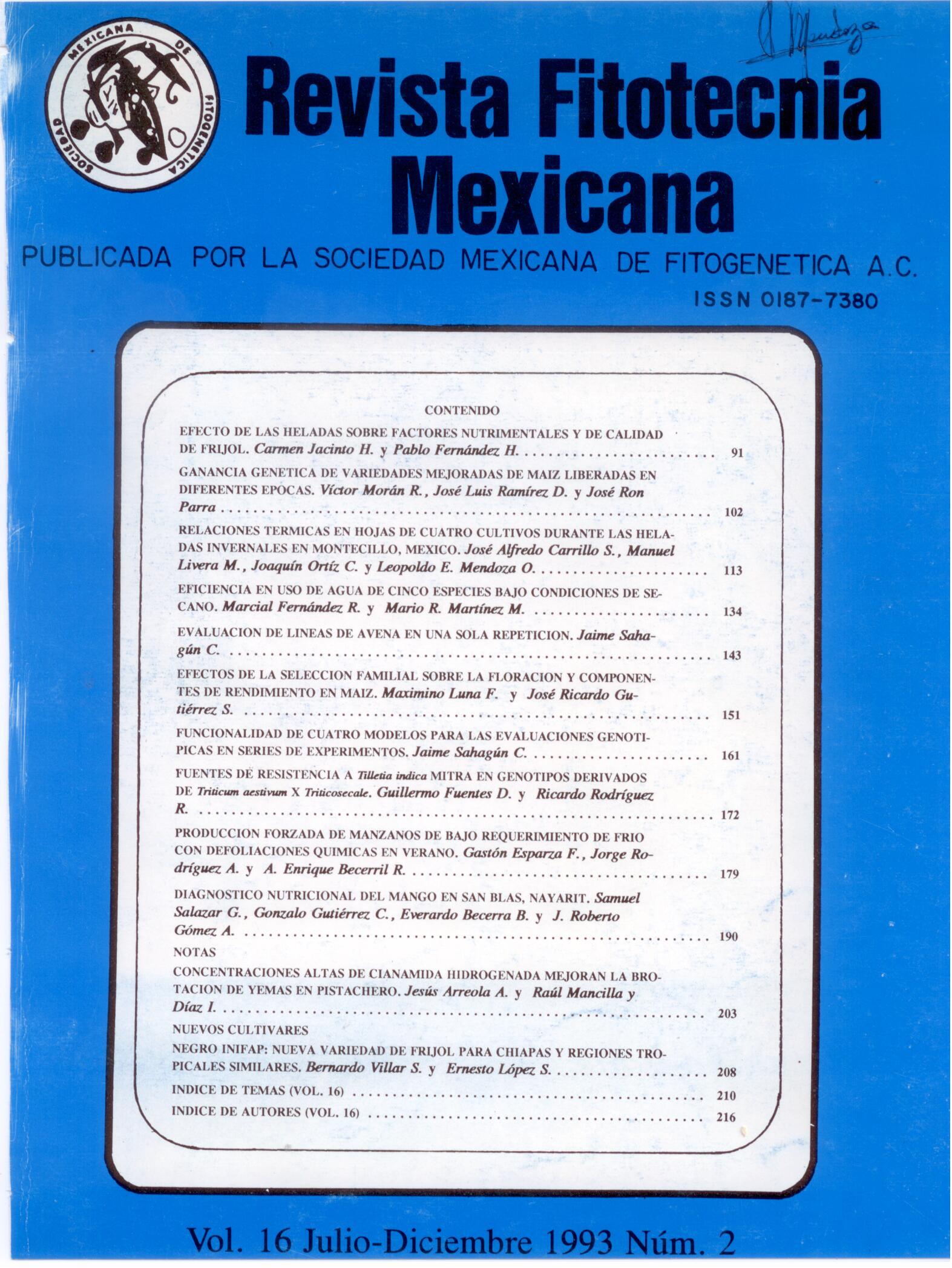WATER USE EFFICIENCY OF FIVE SPECIES UNDER DRYLAND CONDITIONS
Main Article Content
Abstract
In the Mexican highlands, which cover areas of the states of San Luis Potosi and Zacatecas, from the total agricultural area, 93% is dryland agriculture, with 350 to 600 mm annual precipitation. This study was carried out under rainfed conditions, in order to
evaluate the following crops: oat (Avena sativa L.) cv. Tarahumara, barley (Hordeum vulgare L.) cv. Cerro Prieto, bean (Phaseolus vulgaris L.) landrace Bayo Gordo and maize (Zea mays L.) landrace Pipitillo; also maize-pumpkin (Cucurbita pepo) landrace de Castilla and maize-bean intercropping. Crops were evaluated by their water use efficiency (WUE) and income-yield capacity, under two population densities. The results showed that the bean crop was the most oustanding in WUE expressed as net gain in money, with $348/ha/mm of water evapotranspirated and a profit of $34,566/ha. Oat and barley showed the higher values of WUE in term of
grain production/ha and dry matter production (DMP)/ha/mm of water, with values of 6.14 and 16.03 for oat and 6.13 and 16.77 for barley, respectively. The lower plant stands surpassed the higher stands in terms of grain production and WUE expressed as grain production.

